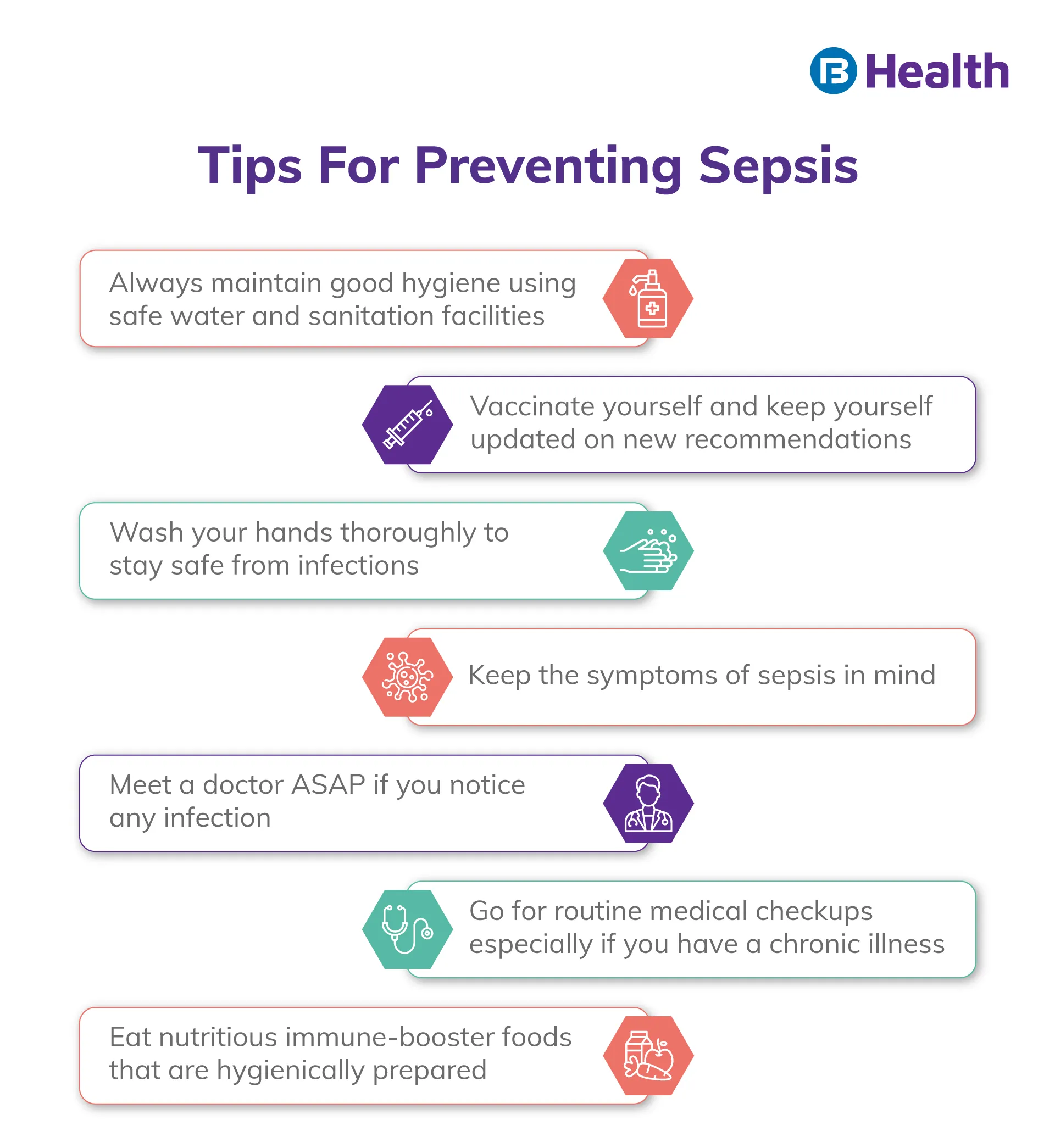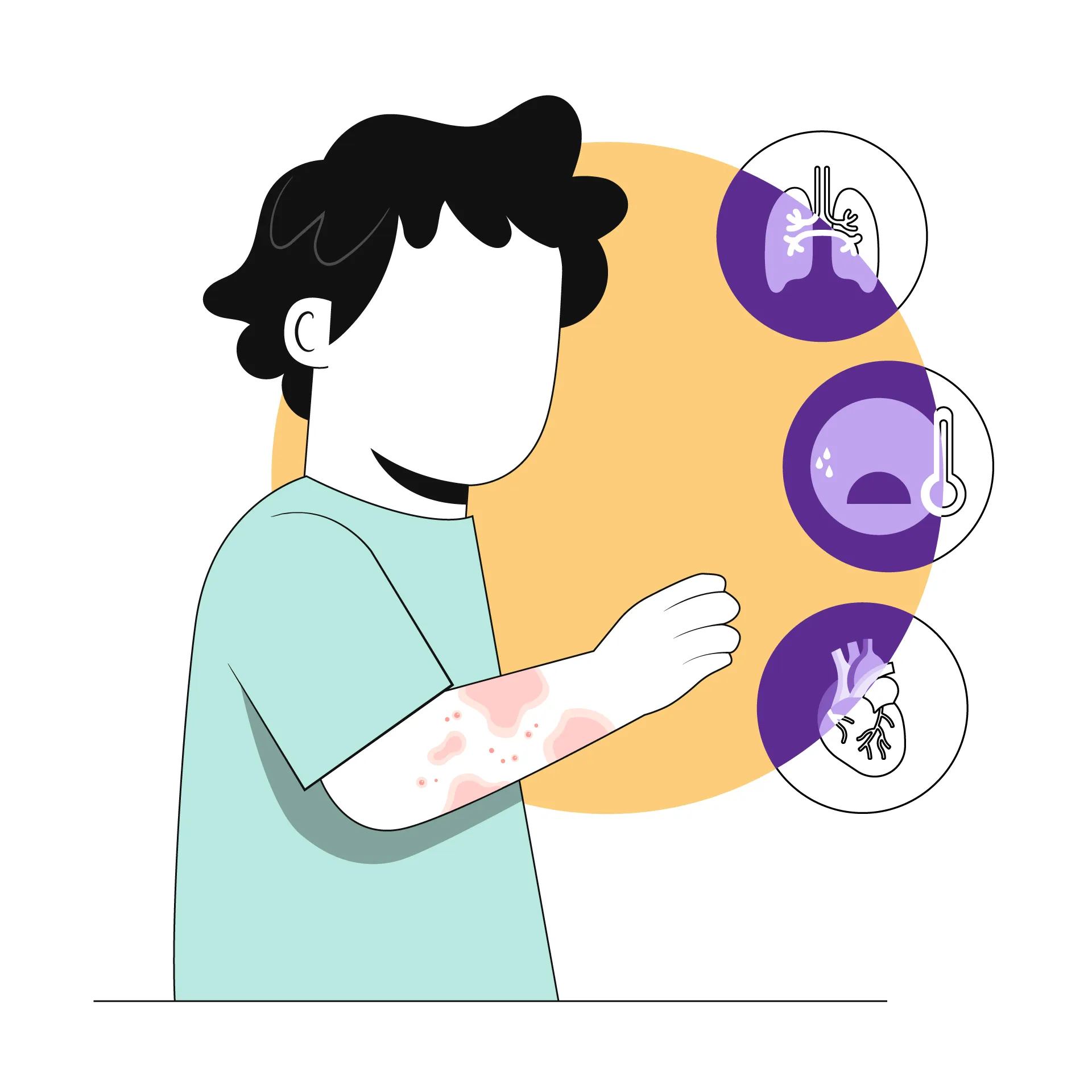General Physician | 4 min read
Sepsis Meaning, Symptoms, Causes and Treatment
Medically reviewed by
Table of Content
Key Takeaways
- Bacterial infections are one of the main sepsis causes
- Fever, chills and fatigue are a few sepsis symptoms
- Sepsis treatment includes antibiotic and IV fluid therapy
Many of you may not be fully aware of sepsis meaning and sepsis symptoms. This is a life-threatening condition in which your body damages its own tissues when an infection occurs. This is because your body’s defense mechanism to fight infection results in poor and abnormal functioning of organs. This can even result in septic shock. This is when your blood pressure decreases drastically. It can affect your vital organs and can even cause death [1].
Sepsis can worsen quickly, so it is essential that you watch out for vital signs and symptoms. Read on for insight into facts like sepsis meaning, symptoms, causes, and treatment.
What is sepsis?
This condition is a medical emergency that is based on your body’s response to any infection. If you are wondering about septicemia vs sepsis, keep the following in mind. Septicemia is a serious bloodstream infection. It is another condition that can occur with sepsis or separately. Septicemia can also cause sepsis, but the two terms don’t mean the same disease.
To understand the sepsis meaning in depth, you need to be aware of how this condition occurs. If you are facing this condition, your immune system starts to release a lot of chemicals in the blood. This can cause inflammation that damages vital organs. Due to the formation of clots in your blood vessels, the blood flow to your organs reduces. This deprives your organs of nutrients and oxygen [2]. While this condition can affect anyone, the following individuals are at a higher risk.
- If you are pregnant, very young or above the age of 65 years
- If you have weak immune system
- If you have preexisting medical conditions like diabetes or cancer
- If you have severe injuries
- If you are hospitalized

What is the most common cause of sepsis?
One of the most common sepsis causes is bacterial infections. It can also occur as a result of viral, fungal and parasitic infections. Different sites in your body that sepsis can occur at include:
- Abdomen
- Urinary tract
- Kidneys
- Lungs
- Central nervous system
- Skin
Sepsis occurs in the urinary tract in those patients who are using catheters. If there is any wound on your skin, bacteria may enter and cause inflammation. If it occurs in abdomen, it can cause bowel problems or liver infections. While this condition can cause pneumonia in lungs, it may result in spinal cord or brain infections if it affects your central nervous system.
What are the sepsis symptoms you should watch out for?
Since this condition can affect different parts of your body, you may experience several symptoms. Here are a few sepsis symptoms you should not ignore:
- Increased heart rate
- Fever
- Disorientation
- Chills
- Sweaty skin
- Shortness of breath
- Extreme pain
- Low blood pressure
- Fatigue
- Discolored skin
- Diarrhea
- Vomiting
What are the 3 stages of sepsis?
The main stages of this condition include:
- Sepsis
- Severe sepsis
- Septic shock
The first stage occurs when infection occurs in your blood and causes inflammation in the body. When this inflammation and infection becomes severe and starts affecting your internal organs, it results in severe sepsis. The final stage is a severe complication of the condition that can even cause a drastic drop in your blood pressure. This is known as septic shock and can be fatal.
What are the risk factors of a sepsis diagnosis?
You are likely to experience this condition if you have the following conditions:
- Your platelet count is low
- Your blood culture reveals that you have infection
- If you have either low or high WBC count
- If your kidney or liver does not function properly
- If there is too much acid in your blood
What is the sepsis treatment like?
Quick diagnosis and immediate treatment are a must for sepsis treatment. If you are diagnosed with severe sepsis, doctors will admit you to the intensive care unit. After identifying the infection type and source, they will give you antibiotics. In some cases, you may be given IV fluids to ensure your blood pressure does not drop too low.
Now that you are aware of this condition, keep a close eye on its symptoms. With preventive measures like good hygiene and getting yourself vaccinated on time, you can prevent infections. This is the best way to avoid sepsis. Remember, this condition is most commonly seen during hospitalization or after it. If you have been admitted in an ICU, be aware of this. In case you are not able to recover from any infection or wound, meet a doctor. You can talk to top specialists on Bajaj Finserv Health with ease. Book an in-person or online doctor consultation to address any sepsis symptoms on time!
References
- https://www.sciencedirect.com/science/article/abs/pii/S0002934307005566
- https://www.ncbi.nlm.nih.gov/pmc/articles/PMC5389495/
Disclaimer
Please note that this article is solely meant for informational purposes and Bajaj Finserv Health Limited (“BFHL”) does not shoulder any responsibility of the views/advice/information expressed/given by the writer/reviewer/originator. This article should not be considered as a substitute for any medical advice, diagnosis or treatment. Always consult with your trusted physician/qualified healthcare professional to evaluate your medical condition. The above article has been reviewed by a qualified doctor and BFHL is not responsible for any damages for any information or services provided by any third party.






